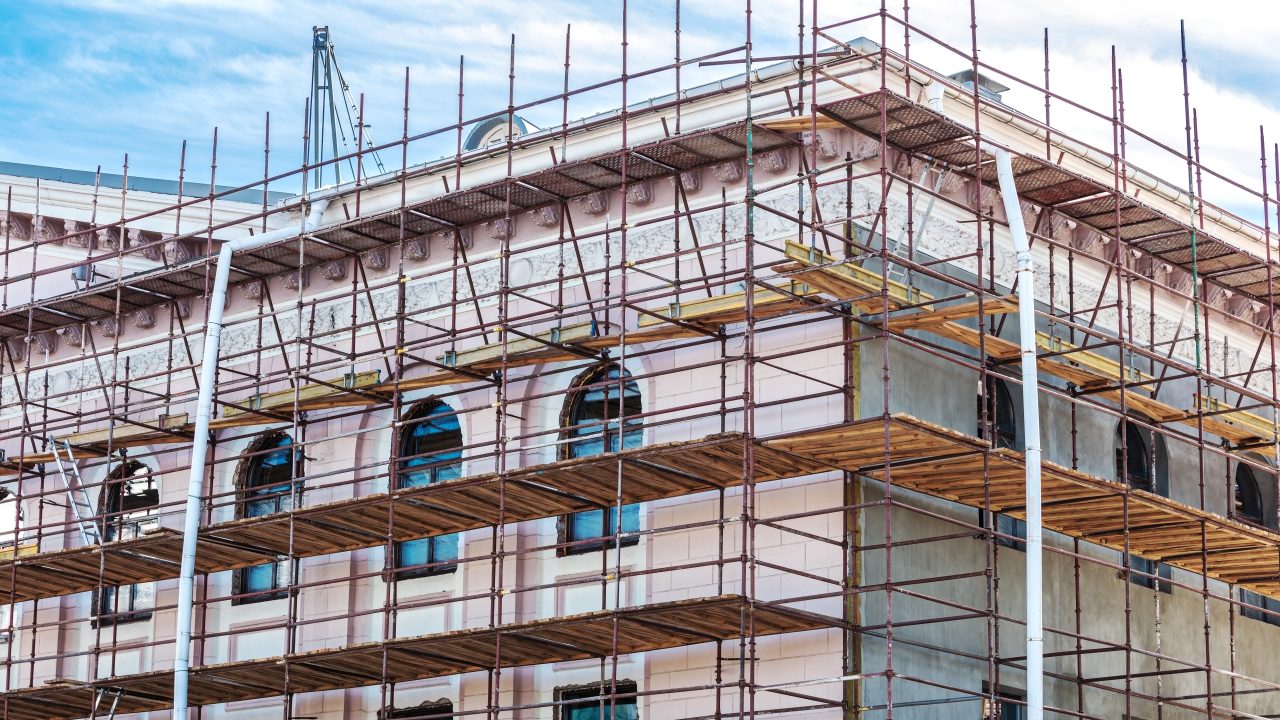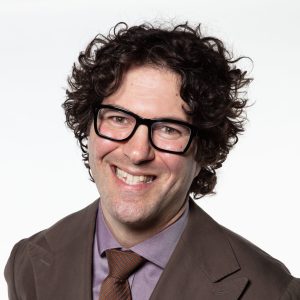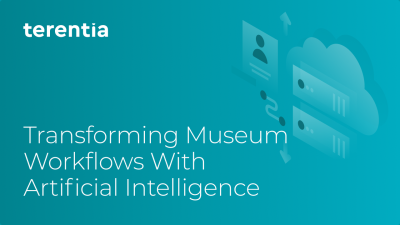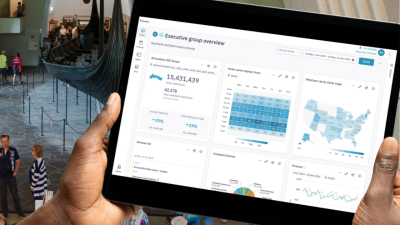
In the early days of COVID lockdowns, longtime cultural consultant and writer András Szántó began interviewing dozens of museum leaders around the world. As the pandemic simultaneously slowed down schedules and accelerated the field’s pace of change, he sought to capture this decisive moment in determining the future of museums.
I was recently encouraged to read several of the Q&As in the resulting book, The Future of the Museum: 28 Dialogues, and I was glad I did. Later, I had the chance to connect with András, and over a series of emails, we discussed the book’s themes, his interviews, and his upcoming project. Here are some excerpts from our conversation:
Adam Rozan: Please introduce yourself, and can you share what you do?
András Szántó: My colleagues and I, through the work of András Szántó LLC, advise museums, cultural and educational organizations, foundations, and companies on strategic initiatives in the arts, especially the visual arts. And whenever I am able, I write about the art world, which has been an academic interest of mine since earning my doctorate in sociology at Columbia University in the 1990s.
Skip over related stories to continue reading articleAR: Your book, The Future of the Museum: 28 Dialogues, was published in 2020, and while already three years old, it still feels fresh and new. If I understand correctly, these interviews originate from a series you held while a staff member at the Metropolitan Museum of Art. Is that correct?
AS: That’s right. The book appeared in late 2020. It was a product of the pandemic period. We’re already getting ready to launch the sequel with museum architects.
I was involved with the Met, though not strictly as a staff member, but close to it. The Global Museum Leaders Colloquium was a series of invitational gatherings organized by the Director’s Office of the Met, with me serving as its lead moderator, to provide a platform for international museum directors to engage with each other and Met colleagues around the myriad challenges of museum leadership. It opened my eyes to the global diversity of museum culture, which is reflected in the twenty-eight conversations with museum directors that fill this book.
AR: Any hints about some of the architects we can look forward to reading about in your forthcoming book?
AS: I don’t want to give too much away. Buy the book! I will say that for American museum colleagues, it might be especially interesting to hear from architects who are currently engaged in some of the more prominent projects over here in the US. Frida Escobedo and Kulapat Yantasast, for example, are both designing sections of the Met. David Adjaye is working on major museum commissions, including the Studio Museum in Harlem. Liz Diller has been transforming American cultural institutions for quite some time, as has David Chipperfield. But other up-and-coming studios featured in the book, such as the Brooklyn-based SO-IL, are destined to leave a mark on the landscape of museums in this country. Having said that, the book is not about the US at all, but about museum architecture and museum culture worldwide.
AR: Let’s talk about the first book with museum directors! Multiple themes are woven throughout the interviews, such as the need for museums to respond to change and the future of museums and the museum industry. I also see a thread around alternative business models and types of museums and an overall reimagining of what a museum is, what it does, and who it is for.
AS: Correct. The book, as I noted, originated during the pandemic lockdown. It was a natural moment to stop and ask: What will the future bring? It was a before-and-after moment, a threshold, a starting point. Everyone perceived that whatever came next would be different. And it was a perfect time to talk with museum directors who are usually on the move. However, I want to point out that the book is not about the pandemic per se. In fact, these changes predated the pandemic. And they were accelerated by it.
As much as I was aware of how much the museum field was shifting, even I was taken aback to discover the consistency of the answers, calling for a thorough reevaluation of the art museum’s purpose and modes of operation. That moment was heavily influenced by the protests of 2020 and the many reckonings they entailed. There was a collective sense of a pivot. Museum leaders were embracing new aspirations and ways of working—especially the idea that a museum operates in the service of all of society. This aspiration became enshrined in ICOM’s recently adopted definition of the museum.
AR: Who are some of the twenty-eight individuals you feature, and why this group?
AS: The easy answer is that I already knew many of them as colleagues, conversation partners in various events, leaders in the field, and in some cases as friends. But some key organizing principles were shaping the book.
One was that I wanted a truly global range. We talk a lot about globalization. It is arguably the most important transformative process shaping the museum field. Yet it is still all too rare to hear these voices foregrounded. I am especially pleased that the book has attempted to get such a cultural and geographically diverse pool of directors involved.
Another goal was to reflect the changing gender composition of the field. Museum leadership is gradually—albeit much too slowly—shifting to women. I wanted half my interlocutors to be women, and they were.
Most importantly, regardless of gender or location, I was interested in talking with people who are working to change institutions and thinking in original ways about them. This is not to say other directors are not doing those things. I could easily have filled another book with conversations with equally fascinating museum directors.
AR: ICOM introduced a new museum definition in 2020, which you also commented on in your introduction to the book. You asked many of your interviewees to share their definitions of a museum. From those discussions and your take, how do you now define a museum?
AS: ICOM failed to get an agreement in 2019 on its new definition, which already attempted to enshrine the aspirations of a new museology. Several participants in the book noted that while the definition was overwrought, they agreed with its overall intentions. ICOM gave it another go in August 2022. This time they succeeded. It’s a pretty good definition, as far as these exercises go. I have a few quibbles with it, but it has evolved a great deal. Yet even the 2019 definition seemed to work for many, at least in spirit.
Rather than attempt my definition here, I suggest the reader look at how the directors grappled with it and, more recently, how architects grappled with it in Imagining the Future Museum. It’s not as easy as you think, by the way.
AR: You write in your introduction, “Perhaps the most striking aspect of that future is its global range . . . Some of the most exciting, paradigm-smashing experimentation now happens in Africa, Latin America, Australia, and parts of Asia.” Can you elaborate?
AS: If this book has one major thesis, it is that we have moved past an era in which the concept of the museum was, by and large, dictated or exemplified by the Global North. As museums proliferate worldwide, we are entering a new, pluralistic era for museums, where museums are more free to reflect their local roots. And in this context, some African museums, for example, offer highly original takes on what a museum can be or what sort of activities happen there. Who says a museum must be perfectly air-conditioned and humidity-controlled enclosed space for showing pictures and sculptures? It can be so much more.
AR: I was also struck, again, in your foreword, by the historical writings of Alfred H. Barr and Alexander Dorner, the latter of whom wrote, “the new type of art institute cannot merely be an art museum as it has been until now, but no museum at all. The new type will be more like a power station, a producer of new energy.” And, of course, Stephen E. Weil, in his essay, From Being About Something to Being for Somebody, writes, “in the emerging museum, responsiveness to the community must be understood not as a surrender, but quite literally, as a fulfillment.”
This is our history in the museum space, yet we’re in a perpetual cycle of forgetting and then reminding ourselves of this. What’s the takeaway here, and what is the message?
AS: I was reminding the reader of these quotes to illustrate that the museum looks back on a long history in which its elitist and democratizing impulses have continually clashed. We are in a democratizing phase right now. But this strain has long been with us. Generations of thinkers and practitioners have tried to pry open the museum and make it available to a wider spectrum of society. There are many shoulders to lean on. Even so, the museum is still an aloof, closed, exclusive space in the eyes of a vast swath of society. Much work has to be done programmatically, staffing-wise, in governance, even in the physical embodiment of the museum to convince people that the museum is, in fact, an open institution.
AR: Each interview offers a unique perspective, and each is worth a read; still, a few standout, such as Marie-Cécile Zinsou’s from the Musée de la Foundation Zinsou. A first-time museum director who describes building her museum from inception and willing the museum to happen. Can you share more on this story?
AS: This is an excellent example of a museum not having to copy its traditional European-based institutional form. First, Marie-Cecile built an art space in Benin, perhaps the first in the country, and that became a popular destination. Then she created a proper museum that conformed to all the codes for displaying artwork. It was able to exhibit an impressionism exhibition, meeting all criteria for loans. The French president cut the ribbon. But she realized it was not really an African museum. It used up a massive amount of expensive electricity. Now she is thinking about her third museum. It may not have a roof or air conditioning.
AR: In the book, you discuss with several of your interviewees that the future of museums is in Asia. Can you elaborate?
AS: That is simply a fact. European and North American museums tracked the ascent of cities on those continents and the great fortunes accumulated there. Now, much the same is happening in Asia. Not long ago, China was opening one museum-like facility daily, thousands over a decade. India is on the move. What’s interesting in this story is that Asia will leave a cultural imprint on the museum field, just as North America did in its heyday. It will be fascinating to see what that imprint will end up being.
AR: After working on this project and sharing the voices of twenty-eight leaders from the field, what’s your message to the broader museum community, and what do you think the future looks like for museums?
AS: The way I have been thinking about this is that these dialogues demonstrate that the museum, as it were, is running new software. There has been an operating-system upgrade. But that upgrade is not a rejection of what came before. No one is kicking the objects to the corner and turning the museum into some community dance hall. We are seeing a field-wide effort to build on the museum’s strengths, to make it better and more in tune with society’s current and constantly evolving realities and needs.
This is why I just finished the follow-up to the book, in which I speak with architects about the “hardware” that might reflect, complement, and enable the new software. The book is coming out in the US in January, titled Imagining the Future Museum: 21 Dialogues with Architects. And what these two books, taken together, suggest is that the museum—despite the many crises that have been roiling inside of them and the tempestuous social and political dynamics swirling around them—is alive and well. This is a resilient institutional form. And yes, one that is open to improvement.
The best of these institutions are meant to stay around forever. Not many organizations could make that claim, or even have that aspiration. Therefore, the museum will always be in flux, experiencing a constant push and pull between old and new, tradition and modernity, constancy and adaptation. I believe museums are demonstrating they are capable of change. For this reason, it is a very exciting time to be around them.
AR: Thank you, András, and I look forward to picking up our discussion again when the 21 Dialogues with Architects comes out.









It would be difficult to imagine a more distorted view of the museum field – even of art museums, which seem to be the sole focus of this commentary.